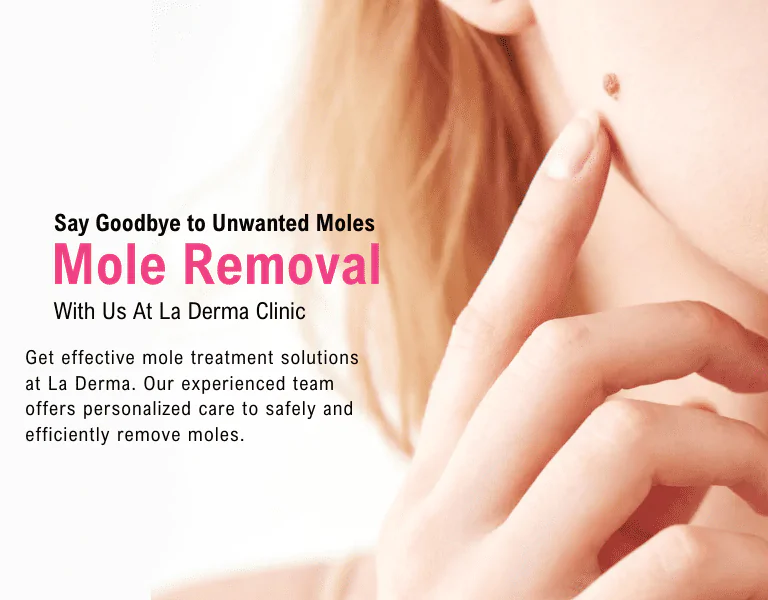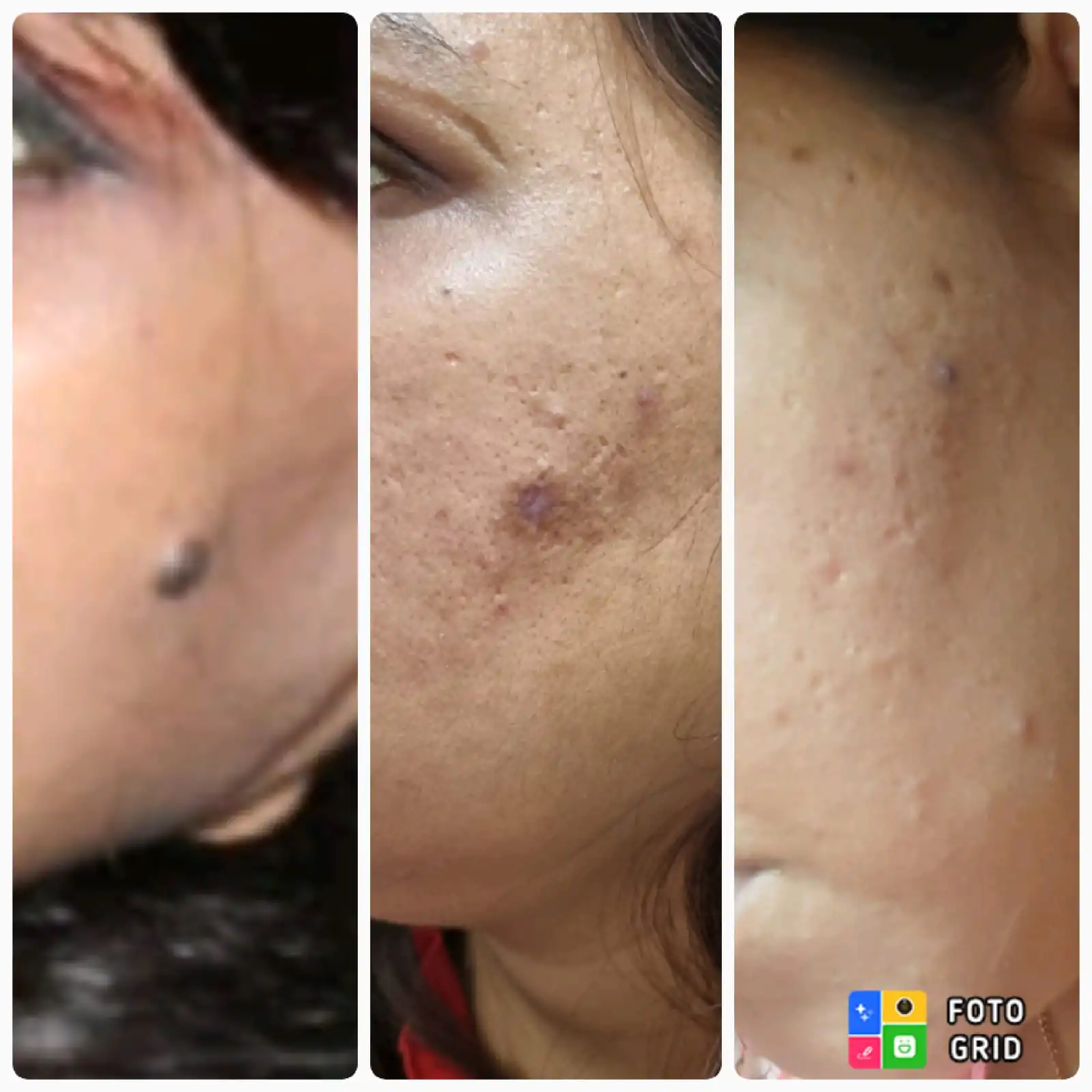What are Moles / Warts / Skin Tag / Freckles / CORN and Callus?
There are numerous common and non-cancerous skin conditions, which include moles, freckles, skin tags, and warts.
Moles are skin growths typically brown or black and can emerge anywhere on the skin, either individually or in clusters. Most moles develop during childhood and the first 25 years of a person’s life. By adulthood, individuals usually have between 10 to 40 moles. Over time, moles typically undergo gradual changes, becoming raised and altering in color. Occasionally, hair may grow within the mole. While some moles remain unchanged, others may slowly vanish with time.
What Causes a Mole?
Moles develop when melanocytes, the skin cells responsible for producing the pigment that gives skin its natural color, clump together rather than being evenly distributed across the skin. Moles can become darker due to sun exposure, adolescence, or pregnancy.
Types of Moles
- Congenital Moles: Congenital nevi are moles that you have from birth. They’re not very common, occurring in only 1% of people. However, it’s worth noting that congenital nevi have a slightly higher risk of turning into melanoma, a type of skin cancer, compared to moles that appear after birth. If you have a mole or freckle that’s larger than a pencil eraser or shows any of the ABCDE signs of melanoma (explained below), it’s important to get it checked by a healthcare professional.
- Dysplastic Moles: Dysplastic nevi are moles that are typically larger than the average mole (bigger than a pencil eraser) and have an irregular shape. They often exhibit uneven coloring, with dark brown centers and lighter, uneven edges. These moles have a slightly increased risk of developing melanoma, a serious type of skin cancer. Individuals with 10 or more dysplastic nevi are 12 times more likely to develop melanoma. If you notice any changes in a mole, it’s essential to have it examined by a dermatologist to assess the risk of skin cancer.Corns and calluses are thick, toughened layers of skin that develop as a natural defense mechanism when the skin encounters friction or pressure. They commonly form on the feet, toes, hands, or fingers.
How Do I Know if a Mole Is Cancer?
The majority of moles pose no significant threat. Moles that may raise concerns are those that differ in appearance from existing moles or those that emerge after the age of 25. If you observe alterations in a mole’s color, height, size, or shape, it’s advisable to seek an evaluation from a dermatologist (a skin specialist). Additionally, moles should be examined if they exhibit any of the following symptoms: bleeding, oozing, itching, or becoming tender or painful.
To examine your skin, use a mirror or request assistance from someone else. Pay close attention to areas frequently exposed to the sun, such as the hands, arms, chest, neck, face, ears, legs, and back.
If a mole remains stable over time, there’s generally no need for concern. However, if you notice any changes in an existing mole, discover a new one, or wish to remove a mole for cosmetic reasons, it’s advisable to consult with a dermatologist.
When evaluating moles, consider the following ABCDE criteria. If a mole displays any of these signs, promptly consult a dermatologist, as it could potentially be cancerous:
- A – Asymmetry: One half of the mole does not match the other half.
- B – Border: The border or edges of the mole appear irregular, ragged, or blurred.
- C – Color: The mole’s color is inconsistent or exhibits shades of tan, brown, black, blue, white, or red.
- D – Diameter: The mole’s diameter exceeds that of a pencil eraser.
- E – Evolution: The mole is changing in terms of size, shape, or color.
Skin Tags:
A skin tag is a tiny piece of tissue that dangles from the skin, attached by a slender stalk. They are commonly located on the neck, chest, back, underarms, beneath the breasts, or in the groin region. Skin tags tend to be more prevalent in women, particularly as they gain weight, and in older individuals.
Generally, skin tags are not painful. However, they can become irritated if they come into contact with clothing, or jewelry, or experience friction against the skin.
Warts:
Warts are a skin infection caused by the human papillomavirus (HPV). This infection leads to the development of rough, skin-colored bumps on the skin’s surface. It’s worth noting that warts are contagious and can be transmitted through direct contact with an infected person. While warts typically manifest on the hands, they can also affect other areas of the body, including the feet, face, genitals, and knees.
How Moles, Freckles, Warts, Corn, Callus, and Skin Tags are treated?
With the advancement of technology Moles including DPNs, freckles, Warts, and Skin Tags are now removed using a high-precision CO2 Laser device. This is an outpatient procedure and does not require any specific preparation. The procedure is quick and painless. There is no downtime. The freckles may be treated by TCA peel also. The dermatologist will decide the best treatment option for you.
What is the cost of Mole Removal treatment in Kolkata?
The cost depends upon the size and number of lesions. It starts at 3000 only and averages around 5000 only.













